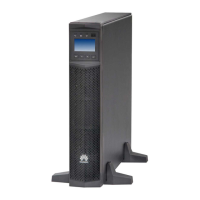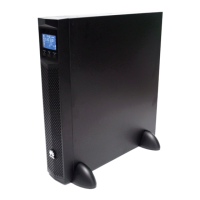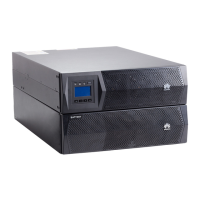32
1. Set the parallel mode and the number of redundant UPSs.
2. The UPS automatically synchronizes its settings to other UPSs in the parallel system.
4. If no alarm is displayed on the monitoring screen, continue with the subsequent operations. If
an alarm is displayed, clear the alarm.
2. Perform "startup operations" on each UPS in the parallel system: On the standby screen, hold
down for more than 5 seconds. Release the button when you hear a beep sound. The
startup screen is displayed. After the UPS starts successfully, it enters normal mode.
3. After the parallel system runs properly, switch on the general AC output circuit breaker Q for
the UPSs and start each load. To prevent triggering overload protection, start the loads with
higher power and then loads with lower power.
After you perform "startup operations" on UPS 1 to UPS
n
one by one, UPS 1 to UPS
n
are
starting. If you do not perform "startup operations" on the other UPSs in 5 minutes, UPS 1 to
UPS
n
enter normal mode, and the other UPSs supply no power.
3. Set battery string sharing for each UPS based on site requirements.
Setting Parallel Parameters
8.3
1. Check that the bypass input is normal and the UPS has transferred to bypass mode by viewing
the system running status on the LCD.
Starting the Inverters
8.4
This step applies only to the UPS2000-G-15KRTL-01 and UPS2000-G-20KRTL-01.

